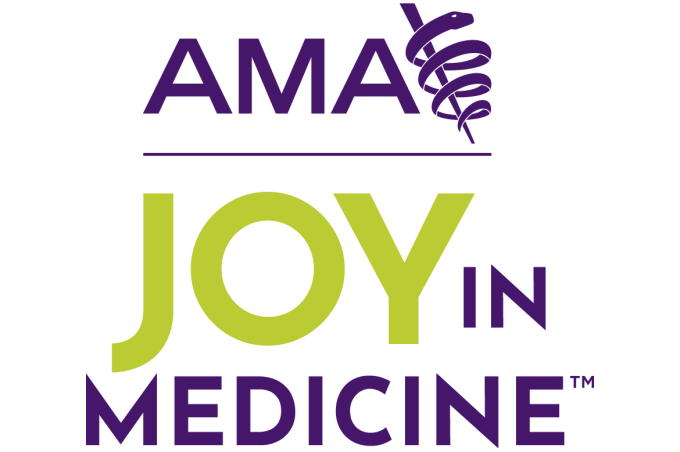One done, many more to come.
Orthopaedic surgeons at the Danville, Pennsylvania-based Geisinger integrated health system recently performed a reverse shoulder replacement and announced that it will stand behind the full cost of any care related to the procedure for the rest of the patient’s life.
“It really opens up the door from the perspective of the patient and consumer to ultimately enter into a complex medical procedure that gives them good quality of life and return to function, but with the peace of mind of knowing that—if anything ever goes wrong—they won't have any out-of-pocket expenses for the rest of their life,” said Michael Suk, MD, JD, MPH, MBA, an orthopaedic surgeon and chair of Geisinger’s Musculoskeletal Institute and orthopaedic surgery department.
“As of today, we're still the only health system in the entire world that does this,” Dr. Suk added.
Geisinger is a member of the AMA Health System Program, which provides enterprise solutions to equip leadership, physicians and care teams with resources to help drive the future of medicine.
Shoulders are latest joint project
Shoulder replacement is the newest procedure added to Geisinger’s ProvenCare portfolio, which is the cornerstone of the system’s value-based care initiatives.
ProvenCare was launched in 2006 and included a 90-day warranty on Geisinger coronary artery bypass surgeries.
The program grew to include orthopaedic programs for hip fracture plus total hip and knee replacements in 2014. Four years later, lifetime guarantees were offered to qualified patients for those procedures.
“It rang the bell that can't be unrung,” said Dr. Suk, who is also chair of the AMA Board of Trustees.
“ProvenCare was simply a recognition that, if things are done right, under the right controlled circumstances, with the right insurance and the right surgeons or physicians, that we can guarantee it for 90 days,” he recalled. “I began to ask the question: Why are we stopping at 90 days?”
A two-year warranty was discussed and then “ultimately, we decided that we might as well just go for it,” Dr. Suk said.
This led to the important work of learning what needed to be done to guarantee that an orthopaedic procedure would last for the rest of a patient’s life.
“It pushes you to say that if I'm going to guarantee something, I better get my act together, and that sets a marker out there that pushes and aligns people to say: We're going to maximize our ability to get to that outcome,’” Dr. Suk explained.
Also, “it makes people ask the question: What would it take for us to do this?” he added. “What are the elements? What do you need in place?”
Finding the right partner
The next step was finding an industry partner who would also stand by the lifetime warranty.
There were “some difficult conversations,” Dr. Suk said, that began with the opening question: “What would it take for you to put your money up if something goes wrong?”
Dr. Suk gives credit to Swiss orthopaedic implant manufacturer Medacta International for being a 50–50 partner on the warranties.
“If something goes wrong, they're on the hook as well as we are,” he said.
The arrangement is unusual, Dr. Suk explained, because “the implant company not only stands behind the fact that their metal won't break or corrode inside the body, but they partner with us and say: We're going to stand behind the surgeon.”
Reverse shoulder replacement is commonly performed in patients who have arthritis or a torn or nonfunctioning rotator cuff.
Mark Pallis, DO, is Geisinger’s regional director of orthopaedic surgery, and he performed the first guaranteed reverse shoulder surgery at the Geisinger South Wilkes-Barre facility.
In a news release, Dr. Pallis described how Medacta’s NextAR navigation system uses sensors to place the implant and guide pin placement, and then ream holes the depth of the screw lengths.
“The postoperative results were nearly identical to the preoperative plan based on 3D modeling from a CT scan of the shoulder,” he said in the release.
His comment echoes the findings of a report published in the Journal of Shoulder and Elbow Surgery that found the use of a head-mounted augmented reality device for reverse shoulder arthroplasty “led to low deviation between planned and postoperative values” and parameters.
“Imagine putting on the VR [virtual reality] goggles and your hands are in space, and you can identify exactly where the center of a particular anatomic component needs to go and the hand is guided in terms of drilling the canal in exactly the right position,” Dr. Suk explained.
“This … is stuff we dreamed about maybe 10 years ago, but it's happening in front of us now,” he added.
There are two avenues in which technology is making an impact in total joint replacement, Dr. Suk said.
One is in “the world of robotics” where an artificial arm is doing the drilling or helping the surgeon make the cuts in the bone. The other is “the idea of augmented reality,” which gives the surgeon guidance but “everything is under control” of the physician, he explained.
“In surgery, particularly orthopedic surgery, the surgeons are always going to be absolutely critical to be there because there's always some micro adjustments that need to occur,” Dr. Suk said, but he added that robotic arms do have advantages.
“Sometimes during surgery, you can be in an area that's very awkward ergonomically—well, the robotic arm doesn't really care about that,” Dr. Suk said. “It can just rotate and flip to wherever it wants to be.”
It takes the right patients
While today’s high-tech wizardry allows Geisinger to do amazing things with joint-replacement surgery, Dr. Suk said the lifetime guarantee relies on patient commitment to regain function of their shoulders, hips and knees.
Because of that, not all patients qualify.
For example, smokers have much higher chances of wound complications and infection, so they don’t qualify for the guarantee. Similarly, the evidence shows that patients with high hemoglobin A1c levels are also at higher risk for complications and need to get their level under control before they qualify for a lifetime guarantee.
“If your hemoglobin A1c is X, then we know you have a higher likelihood of having a problem,” Dr. Suk said. “The evidence-based guidelines help us identify where there's additional risk, and we try to make sure that the patients have zero or at least controlled risk within those parameters.”
Also, even if a patient is in “perfect physiological condition” but won’t commit to physical therapy, they will not qualify for the lifetime guarantee.
“If they say, ‘Well, I don’t want to go to rehab’ or ‘I don’t want to do PT,” we take this into consideration to ensure that there’s the appropriate patient engagement in the process, that they will follow up, that they will do the PT as prescribed, and they will continue to help us understand their progress over time,” Dr. Suk said.
Geisinger helps patients in their postoperative recovery with a digital platform that sends them helpful “nudges” and reminders to do their PT. It also gives them direct access to a nurse navigator who can answer questions.
“We have visibility into the whole postoperative journey—not just the couple times that I get to see them after surgery,” Dr. Suk said.
Guarantee gives patients confidence
“Serious surgery can be a scary thing to begin with,” Dr. Suk said. But the guarantee is something that says we have such confidence in our surgeon, we have such confidence in our hospitals that—if anything goes wrong—we'll take care of it’ That's a gigantic release mechanism for people who are already anxious about having surgery.
Along with successful clinical outcomes, Dr. Suk believes the lifetime guarantee cements Geisinger’s reputation as an innovator in orthopaedics and a thought leader in value-based care.
“These are real measures of success,” he said. “But at the end of the day, we use traditional markers. Is the patient happy? Did they have a good experience? Is the outcome good? In general, we do very, very well in those things.”
Geisinger is willing to share its ProvenCare methodologies so that other systems can offer guarantees, Dr. Suk said.
“Frankly, I'm a little surprised there aren't more organizations and there's not more interest in doing what we're doing,” he said. “It's hard to imagine that patients or consumers would be willing to accept the fact that, when you buy something, that they don't stand behind the work.”
If another health system does decide to follow Geisinger in offering lifetime guarantees, Dr. Suk said the first step they have to take is to ask: “What does it take to get there?”
“That's what spurred our conversation,” he said. “Then we found out that it's hard, but great things are hard.”





